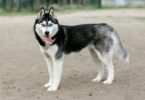Did you know dachshunds rank among the top 15 most popular dog breeds in the U.S., with their silky-coated variants gaining attention for both looks and personality? These small but spirited companions boast an impressive lifespan of 12–16 years—nearly 25% longer than many similar-sized breeds.
Originally bred in Germany for hunting badgers, modern dachshunds have traded rugged terrain for cozy couches. Their signature low profile and bold nature make them ideal for active families. The long-haired variety stands out with soft, straight fur that forms elegant feathering along the legs, ears, and tail.
Maintaining that luxurious coat requires weekly brushing to prevent tangles. Regular ear checks and nail trims are also essential, as their floppy ears and compact size make them prone to infections and joint issues. A balanced diet and moderate exercise help keep these 9–12 kg pups at a healthy weight.
This guide explores everything from grooming routines to common health concerns. Whether you’re a first-time owner or a seasoned dachshund enthusiast, you’ll find actionable tips to ensure your furry friend thrives. Let’s dive into what makes this breed such a beloved family companion.
Introduction to the Long Haired Doxie Dog
Originally hunters in 18th-century Germany, dachshunds now charm households with their curious nature and striking appearance. The long-coated variety distinguishes itself through silky fur that drapes elegantly over its frame, particularly around the ears and legs. This breed’s transformation from tenacious badger hunter to cherished family member highlights its adaptability.
Families with children often find these dogs ideal companions due to their playful yet gentle temperament. Their compact size—typically 8–11 inches tall and 16–32 pounds—makes them suitable for both apartments and houses. Regular feeding schedules and consistent care routines help maintain their health and energy levels.
Key traits include expressive eyes, elongated bodies, and sturdy legs designed for digging. While their intelligence shines during training sessions, their independent streak may challenge first-time owners. Proper grooming and attention to ear hygiene prevent common issues like infections.
This guide explores their rich history, daily care essentials, and strategies to address breed-specific challenges. Whether you’re considering adorable long-haired dachshund puppies or already own one, these insights will help you nurture a happy, thriving pet. Let’s uncover what makes this variety a standout choice for dog lovers.
Breed Overview and Characteristics
Developed in medieval Europe, these small hunters evolved into one of America’s favorite companions. The dachshund breed combines historical grit with modern charm, offering a unique blend of courage and affection. Their distinct physique and lively personality make them instantly recognizable among dog breeds.
History and Origins
German foresters engineered dachshunds in the 15th century to pursue badgers through narrow tunnels. The name translates to “badger dog,” reflecting their original purpose. Breeders prioritized compact size and elongated bodies to enhance maneuverability underground. Over time, three coat varieties emerged—smooth, wirehaired, and long-haired—each tailored to different climates and terrains.
By the 1800s, dachshunds transitioned from working dogs to household pets. Their adaptability helped them thrive in urban environments while retaining hunting instincts. Today, they rank as the 12th most popular dog breed in the U.S., according to AKC registrations.
Notable Physical Traits
The breed’s signature silhouette features a muscular, low-slung frame with legs positioned for digging. Feathering along the ears and tail adds elegance to their appearance. Standard dachshunds weigh 16–32 pounds, while miniature versions stay under 11 pounds.
Their double-layered coat comes in shades like red, cream, and chocolate. Age plays a role in care—puppies need gentle handling to protect developing backs, while seniors benefit from joint supplements. Despite their small size, these dogs radiate energy and require daily mental stimulation.
Balancing curiosity with sensitivity, dachshunds form strong bonds with families. Their temperament suits homes with older children who respect their space. Consistent training helps channel their intelligence into positive behaviors.
Essential Grooming and Coat Care
A well-groomed coat isn’t just about looks—it’s a cornerstone of your dachshund’s health. Their silky fur requires consistent attention to stay tangle-free and shiny. Start with a routine that matches their activity level: pups exploring muddy yards need more frequent sessions than couch companions.
Brushing and Bathing Techniques
Brush their coat every 2–3 days using a slicker brush. Work in sections, starting at the neck and moving toward the tail. Pay extra attention to feathering behind the legs and ears where mats form easily. For baths, use lukewarm water and a hypoallergenic shampoo monthly. Rinse thoroughly to prevent residue that irritates sensitive skin.
After bathing, towel-dry gently and use a low-heat blow dryer. Never skip the post-bath brush—damp fur tangles faster. Pair grooming sessions with treats or playtime to build positive associations.
Nail and Ear Care Tips
Trim nails every 3–4 weeks to avoid overgrowth that strains their legs. Use guillotine-style clippers and stop before the quick—the pink area visible in light-colored nails. For ears, wipe the inner flap weekly with a vet-approved solution. Moisture-prone floppy ears can develop infections if neglected.
Consistent grooming reduces shedding and helps spot skin issues early. Adjust frequency during rainy seasons or if your pet enjoys swimming. Remember: a polished coat reflects overall wellness in these spirited companions.
Health and Medical Considerations
While their playful nature charms families, long-haired dachshunds face specific health challenges requiring proactive care. Nearly 25% develop intervertebral disc disease (IVDD) due to their elongated spines, making early detection critical. Regular vet visits and attentive home monitoring form the foundation of their wellness plan.
Common Health Issues
IVDD remains the most pressing concern, often triggered by jumping or obesity. Eye conditions like progressive retinal atrophy and heart issues such as mitral valve disease also rank high. These problems may develop silently, so watch for limping, cloudy eyes, or labored breathing.
Monitoring and Vet Care
Schedule bi-annual check-ups to catch issues early. Vets typically recommend bloodwork and spinal exams for aging dogs. Between visits, track weight fluctuations and mobility changes using a weekly journal.
Preventative measures include using ramps instead of stairs and maintaining lean body weight. Though genetic factors play a role, proper care significantly reduces risks. With consistent attention, most dachshunds enjoy full, active lives despite breed-specific vulnerabilities.
Feeding and Nutrition Guidelines
Proper nutrition fuels your dachshund's adventures from playful puppy days to golden years. Tailoring meals to their life stage supports energy levels, weight management, and that signature silky coat. Let’s break down how to nourish your companion through every phase.
Life Stage Feeding Chart
Puppies (2–12 months) thrive on 3–4 small meals daily (¼–½ cup total) packed with 22–25% protein. Adults (1–7 years) need ½–1 cup split into two meals, focusing on lean proteins and fiber. Seniors (8+ years) benefit from ½–¾ cup with glucosamine-rich formulas to support aging joints.
Balanced Diet Essentials
High-quality dog food starts with human-grade ingredients like deboned chicken or salmon. Sous-vide cooking preserves nutrients better than traditional kibble processing. Avoid fillers like corn or soy, which contribute to obesity—a major risk for spinal issues.
Pair protein (30% of diet) with healthy fats (15%) for coat health and complex carbs (40%) for sustained energy. Transition between foods gradually over 7–10 days to prevent stomach upset. Always consult your vet to adjust portions based on activity level and health status.
Exercise and Activity Needs
How much activity does a compact canine need to stay happy and healthy? These spirited companions thrive on 30–60 minutes of daily movement tailored to their unique physique. Balancing energy release with spinal safety ensures they maintain fitness without strain.
Daily Walks and Playtime
Split exercise into two 15-minute walks to prevent overexertion. Opt for flat terrain to protect their back structure. Interactive games like treat puzzles or gentle fetch sessions engage their sharp minds while keeping jumps low. Avoid letting them climb stairs or furniture—carry small pups instead.
Puppy vs. Adult Exercise Routines
Puppies under 12 months need 5–10 minute play bursts spread throughout the day. Focus on soft toys and floor-based exploration to safeguard developing joints. Adults benefit from longer strolls but still require rest breaks. Always monitor for heavy panting or reluctance to move—signs they’ve hit their limit.
Rainy day? Try indoor hide-and-seek with kibble or a snuffle mat. Hot weather demands early morning outings to prevent overheating. Remember: consistent activity prevents weight gain, a major risk factor for spinal issues. Even 10 minutes of stair-free play strengthens muscles and deepens your bond.
Training and Temperament Insights
Training transforms a dachshund’s natural curiosity into disciplined charm. These intelligent companions thrive on structure, but their independent streak demands patience. Understanding their playful-yet-vigilant temperament shapes effective training strategies that build trust and prevent stubborn behaviors.
Early Socialization
Expose puppies to diverse sounds, surfaces, and people between 8–16 weeks. This window shapes their confidence and reduces fear-based reactions later. Arrange controlled playdates with calm dogs and introduce gentle handling of paws and ears to ease grooming sessions.
Positive Reinforcement Techniques
Reward desired actions immediately with treats or praise—dachshunds respond best to food-motivated training. Use a clicker to mark correct behaviors like sitting before meals. Keep sessions under 10 minutes to match their attention span, ending on a high note.
For stubborn moments, redirect energy with puzzle toys or scent games. One owner reported success by teaching “leave it” using boiled chicken as a reward. Consistency matters: use the same commands for routines like “wait” at doorways.
Well-trained dachshunds adapt smoothly to family life and public spaces. Pair obedience drills with socialization outings to parks or pet stores. Over time, these efforts foster calm interactions with strangers and other pets while reinforcing your bond.
Caring for Your long haired doxie dog
Creating a structured daily routine meets both physical and emotional needs for these affectionate companions. Start mornings with a short walk followed by breakfast at the same time each day. Midday play sessions using puzzle toys or scent games keep their sharp minds engaged. Evening grooming and cuddle time reinforce bonding while maintaining coat health.
Daily Routines and Engagement
Involve children in age-appropriate activities like hide-and-seek with treats or gentle fetch. These interactions teach responsibility while burning off the breed’s moderate energy. Schedule two 15-minute walks spaced throughout the day to protect their back—avoid letting them jump on/off furniture.
Prevent separation anxiety by gradually increasing alone time. Start with 10-minute absences while offering a stuffed Kong or chew toy. Never leave them unsupervised for over 4 hours, as isolation triggers destructive behaviors. Rotate toys weekly to maintain novelty and reduce boredom.
Monitor stress signals like excessive barking or pacing. Busy days? Swap outdoor walks for indoor obstacle courses using cushions. Quiet days allow for extended snuggle sessions or brushing marathons. Consistency in feeding, exercise, and sleep times supports overall health and reinforces trust.
Living with a Long-Haired Dachshund
What transforms a house into a haven for your silky-coated companion? Strategic home adaptations create safe spaces that honor their unique physique while channeling playful energy. These compact pets thrive in apartments when owners prioritize spinal health and mental engagement.
Space Optimization Strategies
Install ramps near couches and beds to prevent jumping. Secure area rugs on hardwood floors to improve traction. Use baby gates to block staircases—their elongated spines can't handle repeated climbing. Designate a low-profile play zone with puzzle mats and chew-resistant toys.
For multi-pet households, create separate feeding stations to reduce competition. Older pets appreciate orthopedic beds in quiet corners, while puppies need puppy-proofed rooms with washable surfaces. Rotate interactive toys weekly to satisfy their curious nature without overcrowding small spaces.
Behavior-Environment Synergy
Positive reinforcement training helps establish boundaries. Teach “place” commands using treat rewards to keep them off high furniture. During introductions to other animals, use scent swapping techniques with blankets before face-to-face meetings.
Schedule vet check-ups every six months to assess environmental impacts on joint health. Track weight changes that might signal inadequate exercise in confined areas. With thoughtful adjustments, even studio apartments can support their need for exploration and comfort.
Tips on Managing Common Breed Challenges
Owners of these silky-coated companions often face two primary challenges: spinal vulnerabilities and stubborn behaviors. Proactive strategies can significantly reduce risks while fostering positive habits. Let’s explore practical solutions backed by veterinary insights and breed specialists.
Addressing Back Issues and IVDD
The breed’s elongated spine makes disc disease 3x more likely than in other dogs. Prevent IVDD by using ramps for furniture access and avoiding high-impact activities. Keep weight under 12 kg through portion control and low-calorie treats—excess pounds strain their frame.
Harnesses distribute pressure better than neck collars during walks. For dogs showing stiffness, consult your vet about anti-inflammatory supplements. Regular check-ups help catch early signs like reluctance to jump or climb stairs.
Overcoming Behavioral Hurdles
Stubbornness often stems from boredom or inconsistent training. Redirect digging instincts with sandbox play areas or scent games. Use time-outs for excessive barking instead of punishment—this reinforces calm behavior.
Separation anxiety improves with gradual alone-time practice. Leave interactive toys like frozen Kongs stuffed with peanut butter. For persistent issues, consider a dapple dachshund care guide to adapt techniques for your pet’s personality.
Consistency is key. Pair commands like “off” with hand signals during training. Reward calm interactions with children using praise or small treats. With patience, even strong-willed pups learn household rules while maintaining their spirited charm.
Selecting Quality Dog Food for Your Breed
Optimal nutrition forms the foundation of your companion's vitality and coat brilliance. Premium formulas address breed-specific needs like joint support and weight management while enhancing fur texture. Start by evaluating protein sources—look for meals crafted with human-grade ingredients free from artificial additives.
Decoding Nutritional Labels
Prioritize foods listing whole proteins like chicken or salmon as the first ingredient. Sous-vide cooking preserves nutrients better than high-heat processing, boosting digestibility. Avoid fillers such as corn gluten meal, which offer minimal nutritional value and may trigger allergies.
Tailor portions to life stages: puppies need calorie-dense formulas for growth, while seniors benefit from glucosamine-rich blends. Rotate proteins every 3–4 months to prevent sensitivities. Transition gradually over 7–10 days by mixing old and new foods to avoid stomach upset.
For homes with young children, choose resealable packaging that keeps kibble fresh and inaccessible to curious hands. Balance omega fatty acids for coat shine and vitamin E for skin health. Consult your vet to match calorie intake with activity levels, preventing obesity that strains delicate backs.
Wrapping Up Key Insights for Your Long-Haired Companion
Caring for these spirited companions blends attentive routines with joyful moments. Their signature silky coat, playful energy, and compact size make them ideal for active households. By prioritizing weekly grooming, balanced meals, and spinal-friendly exercise, you’ll nurture both physical health and that trademark bold personality.
Quality dog food fuels their adventures while preventing weight-related strain on delicate backs. Tailor portions to life stages—puppies need protein-rich diets, while seniors benefit from joint-support formulas. Pair nutrition with daily walks on flat terrain to protect legs and maintain muscle tone.
Early training and home adaptations create harmony between curious pets and busy families. Use ramps instead of stairs, and establish consistent commands to channel their intelligence. Regular vet checks help spot eye conditions or disc disease before they escalate.
This guide equips you with strategies to celebrate their quirks while safeguarding wellness. Revisit sections on feeding guidelines or health monitoring whenever questions arise. With knowledge and care, you’ll build a bond that thrives through every wag and adventure.
FAQ
How often should I groom a long-haired dachshund?
Brush their coat 2–3 times weekly to prevent tangles, and schedule baths every 4–6 weeks. Pay extra attention to feathering on ears and legs for mat prevention.
Are these dogs prone to spinal issues?
Yes, intervertebral disc disease (IVDD) is common. Avoid letting them jump from heights, maintain a healthy weight, and use harnesses instead of neck collars during walks.
What’s the ideal exercise routine for this breed?
Provide 30–45 minutes of daily activity, split into walks and play sessions. Puppies need shorter, frequent bursts to protect developing joints.










Leave a Comment